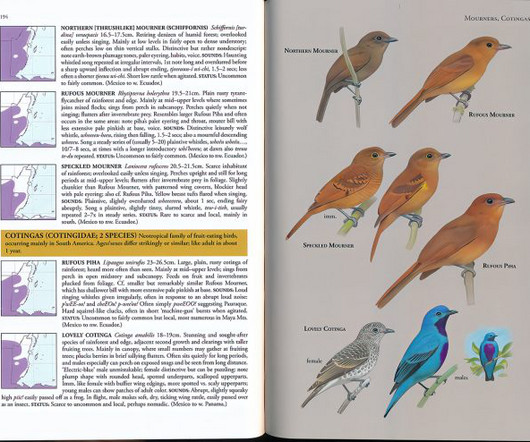Birds of Central America: A Field Guide Review
10,000 Birds
NOVEMBER 6, 2018
It actually makes a lot of sense, the geographic features of the isthmus between North America (including Mexico, because Mexico is part of North America) and South America cut across political lines, as do birds. It is the first bird field guide to every country of Central America (plus the islands governed by those countries).












Let's personalize your content